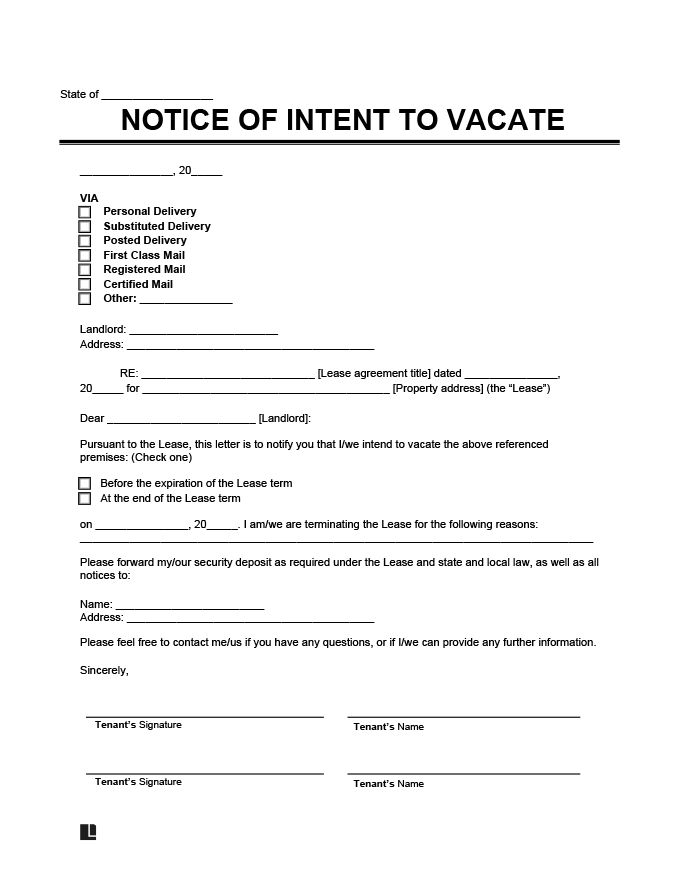A notice to vacate letter is a written notice a tenant gives to a landlord, indicating the intent to leave the rental property by a specified date. This date must be in accordance with the terms and conditions of your lease agreement and relevant local or state laws.
You should send a notice to vacate letter to your landlord. Hence, the property owner understands your plans to vacate the premises soon, which allows them to plan future tenancies accordingly.
What Is a Notice to Vacate?
A tenant notice to vacate letter is a legal document a tenant sends to a landlord to inform of a plan to move out of an apartment, condo, house, or another rental residence.
Tenants typically send this notice of their intent to vacate to property managers 30, 60, or 90 days before the intended move-out date, depending on the requirements of the lease and state laws.
Unlike an eviction notice, a tenant delivers it rather than a landlord. The notice of intent to vacate is also voluntary, unlike the mandated eviction that an eviction notice requires.
When to Use a Notice to Vacate Letter
It’s a good idea to write a notice to vacate letter in the following situations:
- Your lease automatically renews, and you don’t wish to renew. If your lease automatically renews month-to-month, provide sufficient notice that you’re vacating so you don’t pay rent in a place where you don’t live.
- Your lease is ending, and you don’t wish to renew. If your lease expires and you want to relocate elsewhere, you can notify your landlord to vacate.
- You’ve had a contentious relationship with your landlord. If your relationship with your landlord is already precarious, it’s essential to document everything in case they try to claim you didn’t give them proper notice before moving out.
How to Provide Move-Out Notice
Legally protect yourself by providing proper move-out notice:
Step 1 – Review Your Lease’s Terms
Review your original lease agreement to ensure you comply with its terms as you prepare to provide a move-out notice. You can also check your state’s laws regarding how much notice you must give.
Step 2 – Write and Send Your Letter
Write and send your letter to your landlord. Obtain receipt of delivery to ensure they got your notice on time. Once your landlord knows your intent to move, you can proceed with the final step.
Step 3 – Complete Move-Out Procedures
Complete other move-out tasks to ensure you get your security deposit back and avoid legal trouble, including:
- Paying final utility bills
- Returning your keys
- Performing necessary repairs
- Cleaning your space
